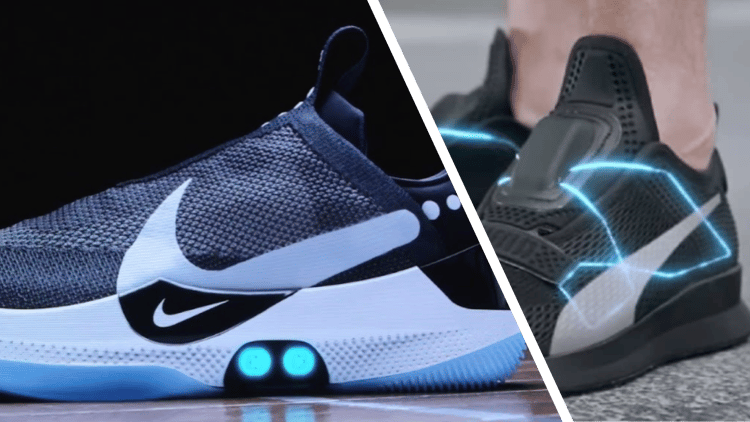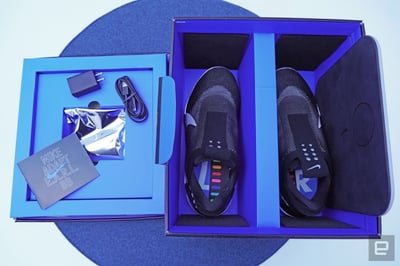
25 February 2019

To be fair Nike are well ahead of Puma in this race, but as with all things in the technology space, they can be quickly overtaken.
This week (19 February 2019) Nike released its long anticipated second version of a self-lacing shoe - the Adapt BB. The shoe was sold out immediately at a price of US$350. However just three days later an app update stopped the shoes from working for users with an Android phone. Affected owners say either their left or right shoe no longer paired with Nike’s app, meaning the shoe did not lace up. Oops!
Meanwhile Puma has simultaneously called for testers of its new self-lacing shoe, the Puma Fi. The Fi stands for Fit Intelligence. The shoes won’t be available commercially until Spring 2020, but Puma is offering pairs for free in an open beta test. Puma has said to stay tuned to its Pumatrac app for an announcement as to when to sign up for the beta test. Once released to the market, the shoes will be priced at $330.
The first Puma Fi was unveiled in Hong Kong on January 31. The shoe is aimed at mass market use, rather than elite athletes, and is a training shoe made for workouts and light running. It is designed to handle the urban landscape and the gym environment.
The Fi technology consists of a micro-motor to power a uniquely configured cable system that “laces” the shoe. It is activated by swiping on the Fi module up or down and can also be adjusted through a smartphone app. To make things even more athlete-friendly, users can make on-the-fly adjustments with their Apple watch.
The Fi comes with a smart sensing capability that learns the shape of the foot of each user and adapts the fit of the shoe to the individual.
Basketball is the only the first of the Adapt Fit range. There are running and lifestyle versions planned for later in 2019.
“We really took the Adapt BB as a moment to study one of the most intense and rigorous sports that exist,” said Nike senior design director Ross Klein. “Once we knew we could conquer there and know the behavior of a basketball athlete, we could really attack the rest of the environments in sport.”
Like opening a Smartphone
Opening the box for the Nike AdaptBB is like opening a smartphone. Included is a QI wireless charging pad, a USB cable/wall charger combo, and Start Up Guide.

Photo Attribution: Engadget
How it works
The BB's auto-lacing system is a custom motor that senses the tension needed by your feet and adjusts itself accordingly to keep each foot snug in the shoes. If you need to tweak the comfort levels, you can do so with the companion Adapt app or the two physical buttons on the BB's midsole.
The core of the Adapt BB is a plastic rectangle box that sits under the arch of the foot inside the shoes. It contains a motor that coils the laces to the desired tightness then locks them mechanically to prevent slippage during use. The 'laces' themselves are a single wire that tracks through a maze of anchors over and up the foot falls.
There is, of course, a battery as well and a coil to enable induction charging from the shoe’s charging plate. And finally a Bluetooth module to allow the shoe to communicate with your phone.
The module sits under arch recessed a few millimetres under the sole insert and invisible to a wearer’s foot. The insole is also made of a new sock-liner foam, which focuses on impact distribution, spreading any point impacts from the box in the midsole over the surface of the foot.
Australian availability
The Adapt BB is not currently available in Australia.
The first Nike self-lacing shoe, the Hyperadapt, which launched in 2016, was available in Australia until recently retailing at around A$900. The shoe is now longer showing on the NIke.com.au website.
The Future of Nike AdaptFit
The new hardware hint at future direction for Nike. The other components of the lace engine could include a 3D gyroscope and accelerometers that measure multiple axes. A shoe could then report on things like gait, foot strike pressure, pace and even in-air motion of your feet.
3 Strategies to Reduce Telecom Cost